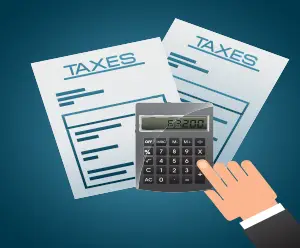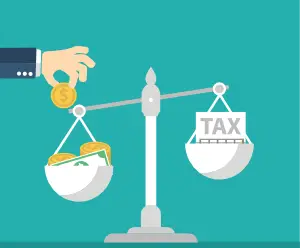
Understanding the IRS Substitute for Return
Click to ask Mike Ask Mike The Internal Revenue Service (IRS) Substitute for Return (SFR) is a term many taxpayers

Innocent Spouse Relief is a crucial provision in tax law designed to help individuals facing unfair tax liabilities due to errors or inaccuracies in joint tax returns filed with a current or former partner. This relief mechanism protects those who can prove their lack of knowledge or involvement in the inaccuracies, offering a legal lifeline to disentangle from the financial consequences of their partner’s actions. By emphasizing fairness in tax liability allocation, Innocent Spouse Relief serves as a vital protection against potential financial distress, shielding innocent spouses from undue tax debts, interest, and penalties.
To qualify for Innocent Spouse Relief, individuals must have filed a joint tax return with their spouse or former spouse. Yet, the crux of eligibility lies in demonstrating a profound lack of knowledge or reasonable suspicion regarding the errors present in the joint tax return. This requirement is coupled with the necessity to establish the inherent injustice of holding the individual accountable for the understated tax liabilities. The nuanced understanding of the dynamics involved forms the foundation for navigating the contours of Innocent Spouse Relief.
Understanding the various types of Innocent Spouse Relief is crucial in tailoring solutions to specific scenarios. The Classic Innocent Spouse Relief comes into play when the tax understatement is solely attributed to errors made by one spouse. This necessitates the innocent spouse to provide tangible evidence of their genuine lack of awareness or involvement in these errors. Separation of Liability Relief endeavors to allocate the responsibility for the understated tax between both spouses, ensuring a fair distribution of financial burdens. The more flexible Equitable Relief, in turn, factors in a broader range of considerations, such as economic hardship or significant benefits derived by the innocent spouse from the tax understatements. Each type is thoroughly designed to address unique circumstances, offering a nuanced approach to tax relief.
The journey towards securing Innocent Spouse Relief involves meticulous attention to procedural steps. Filing Form 8857, the Request for Innocent Spouse Relief, with the Internal Revenue Service (IRS) becomes the foundational step. This comprehensive document serves as the narrative conduit, encapsulating the intricacies of the innocent spouse’s situation. It requires a detailed account of why the claimant believes they qualify for relief, providing the IRS with a comprehensive understanding of the case. Timing is of the essence, with the request typically required within two years of the IRS’s initial attempt to collect the tax. This temporal constraint underscores the imperative of prompt action in seeking relief and avoiding potential barriers.
Upon receiving the relief request, the IRS initiates a comprehensive evaluation process. The agency delves into factors that encapsulate the innocent spouse’s financial landscape, scrutinizing the depth of involvement in financial matters, educational background, and any benefits derived from the tax understatements. Communication with the other spouse or former spouse may also be part of the evaluation process. The overarching goal is to unravel the complexities of the situation and reach a resolution deemed fair and just. This thorough evaluation underscores the commitment to achieving equitable outcomes within the tax system.
In situations where the IRS denies the Innocent Spouse Relief request, a recourse exists in the form of an appeal. Form 12509, the Statement of Disagreement, provides the avenue to present additional information or arguments supporting the innocent spouse’s claim. The appeal process injects an additional layer of scrutiny, underscoring the importance of seeking professional advice during such proceedings. This secondary review mechanism ensures that individuals have an opportunity to present a comprehensive case, further emphasizing the commitment to fairness within the tax relief framework.
In exploring tax safeguards, it’s crucial to differentiate between Innocent Spouse Relief and Injured Spouse Relief. Innocent Spouse Relief addresses situations where one spouse is unaware of errors on a joint tax return, focusing on relieving the innocent spouse from tax liabilities, interest, and penalties. The types of relief available cater to specific circumstances, ensuring a nuanced approach. On the other hand, Injured Spouse Relief safeguards a spouse’s share of a joint tax refund from being offset due to the other spouse’s separate debts. While both provide financial protection, the key distinction lies in the circumstances they address. Innocent Spouse Relief shields against unjust tax liabilities arising from errors, emphasizing fairness and equity, while Injured Spouse Relief mitigates the impact of offsetting when one spouse has separate obligations.
Innocent Spouse Relief transcends its role as a mere legal provision; it stands as a testament to the dynamic and compassionate nature of tax law. Acknowledging the intricate interplay of personal and financial relationships, this relief mechanism not only shields innocent spouses from undue financial repercussions but also upholds the fundamental principle of equity in the tax system. In a landscape where financial responsibilities are often shared, Innocent Spouse Relief symbolizes a commitment to fairness, ensuring that individuals are not unduly burdened by the actions of a spouse in the complex tapestry of joint tax filings.
You can now ask our AI assistant any questions you have about your tax debt or any tax-related issues. Whether you’re unsure about payment plans, need clarification on penalties, or want information on how to resolve your tax situation. Our AI is ready to assist you with all your tax-related concerns.

By interacting with our AI assistance, you agree to our terms & conditions. Enjoy our AI Tax Assistant responsibly.
Ask me any questions...
Related Posts

Click to ask Mike Ask Mike The Internal Revenue Service (IRS) Substitute for Return (SFR) is a term many taxpayers

Click to ask Mike Ask Mike The Internal Revenue Service (IRS) Substitute for Return (SFR) is a term many taxpayers

Click to ask Mike Ask Mike The Internal Revenue Service typically operates within a 10-year window, commencing from the

Click to ask Mike Ask Mike The Internal Revenue Service (IRS) operates within specific timeframes dictated by statutes of limitations

Click to ask Mike Ask Mike understanding the ins and outs of the 10-year statute of limitations (SOL) is essential.
Recent Posts

Click to ask Mike Ask Mike The Internal Revenue Service (IRS) Substitute for Return (SFR) is a term many taxpayers

Click to ask Mike Ask Mike The Internal Revenue Service (IRS) Substitute for Return (SFR) is a term many taxpayers

Click to ask Mike Ask Mike The Internal Revenue Service typically operates within a 10-year window, commencing from the

Click to ask Mike Ask Mike The Internal Revenue Service (IRS) operates within specific timeframes dictated by statutes of limitations

Click to ask Mike Ask Mike understanding the ins and outs of the 10-year statute of limitations (SOL) is essential.
Disclaimer: This is educational content, not legal, accounting, or tax advice.
This is a tax debt resource website, not to be used in lieu of a tax attorney or for legal advice. All information, Ai chat responses, articles, materials, and content are intended to inform users on a variety of tax topics. In no way is it intended to be construed as accounting, legal, tax, other services or advice. This site is not intended to be used to avoid tax penalties or tax debt that may be imposed by law. Terms and Conditions. Your use of this site constitutes acceptance of the following terms and conditions.
This is a tax debt resource website, not to be used in lieu of a tax attorney or for legal advice. All information, Ai chat responses, articles, materials, and content are intended to inform users on a variety of tax topics. In no way is it intended to be construed as accounting, legal, tax, other services or advice. This site is not intended to be used to avoid tax penalties or tax debt that may be imposed by law. Terms and Conditions. Your use of this site constitutes acceptance of the following terms and conditions.
© 2023 · Tax Debt Monster, Inc. All rights reserved

For all Tax Professionals that would like to partner up with us. By partnering with us, you’ll help us connect and make a positive impact in the tax community. Partner up with us and receive a complimentary Ai Tax Sidekick to help support your clients at no cost! Click here if you’re interested in our Partner-Up program

By interacting with our AI assistance, you agree to our terms & conditions. Enjoy our AI Tax Assistant responsibly.
How may I help you with your tax issue?